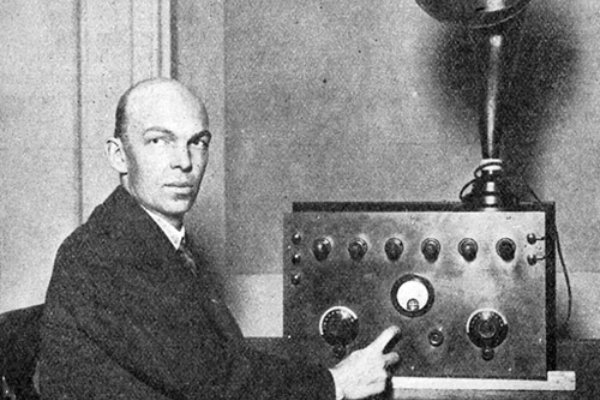He was still a student when he received his first patent: Who is Edwin Armstrong?
The patent fights and courts that took up much of his time drove Armstrong to suicide on February 1, 1954.

(1890-1954) American electrical engineer and inventor. He made important contributions to the development of radio.
He was born on December 18, 1890, in New York. He graduated from Columbia University's Department of Electrical Engineering in 1913 and remained at that university throughout his life. He first became Michael Pupin's research assistant; Upon his death in 1934, he took over the head of the electrical engineering department as a professor. His professional life was quite turbulent. He was still a student when he received his first patent in 1913. Patent disputes and court trials, which took up much of his time from then on, drove Armstrong to suicide on February 1, 1954.
His long-standing relationship with Pupin, which began at a young age, has given Armstrong the opportunity to work with this prolific researcher in the electrical engineering field. On the other hand, living in an academic environment enabled him to continue his research without having to deal with companies that constantly compete with each other for superiority in the field of radio. Armstrong is one of the few people who has been able to maintain his independence on this issue. The invention of the radio is actually a combination of a number of inventions, and the source of many of these inventions cannot be determined with certainty. Armstrong's first important contribution to this subject was De Forest's intuition that the "triode" (audio vacuum tube) that amplifies electromagnetic signals into the audible sound region could be used for current amplification.
For Armstrong, this sense was as important as the invention of the triode. Indeed, although the triode was developed in 1906, its role in electrotechnology applications was limited until Armstrong's groundbreaking discovery.
Armstrong developed the superheterodyne circuit in 1918 while working as a communications officer in World War I. The purpose of this circuit is to reduce high-frequency radio waves to low frequencies so that they can be more easily amplified and detected. In order to achieve this, the incoming radio wave is combined with another wave prepared at a certain frequency and can be easily detected by creating a pulse event in waves with a frequency equal to the frequency difference between them. Armstrong sold his feedback and superheterodyne circuit patents to Westinghouse after the war.
Armstrong's last invention was frequency modulation (FM). He worked on this method, which eliminates interference in radio broadcasts, from 1924 to 1933, despite the producers' indifference and even their obstructive attitudes. Frequency modulation, developed by Armstrong, is a basic communication method based on changing the broadcast frequency. In radio communication using electromagnetic waves, an electromagnetic wave can be in the form of an infinitely repeated sinusoidal curve. It is possible to generate a signal by varying the amplitude or frequency of such a wave. In radio technology, these changes are called "amplitude modulation" and "frequency modulation" and are often denoted by the abbreviations AM and FM.
In amplitude modulation (AM) broadcast, the amplitude of the carrier waves changes according to the sound waves that are to be sent. An important drawback of this method is that the amplitude of the carrier wave is affected by atmospheric events such as lightning, electric storms, and electric vehicles. Random variation of the amplitude of the carrier wave by these factors also causes interference in the receiver. In frequency modulation (FM) broadcast, which Carson made mathematical analysis in 1922 and Armstrong patented in 1937, such factors cannot cause interference since the radio signal changes the frequency of the carrier wave. FM method has become indispensable for quality radio broadcasts.
